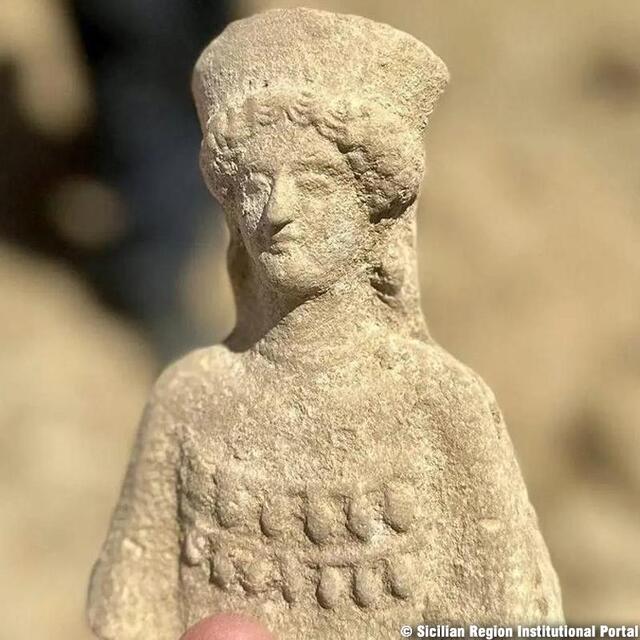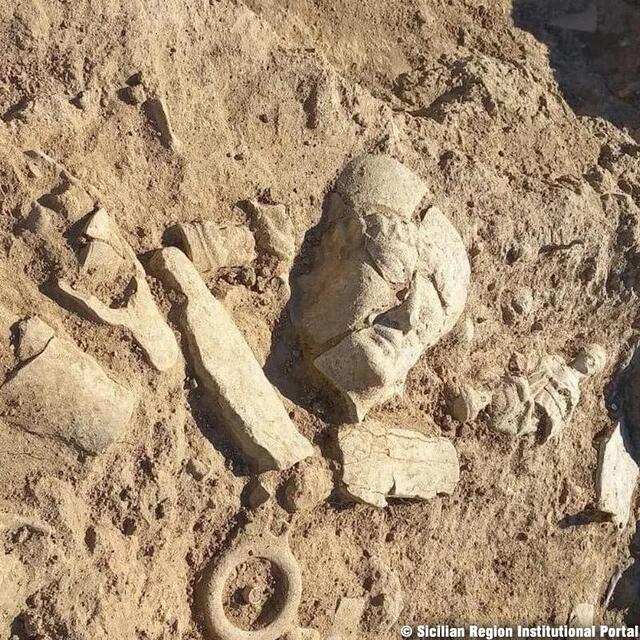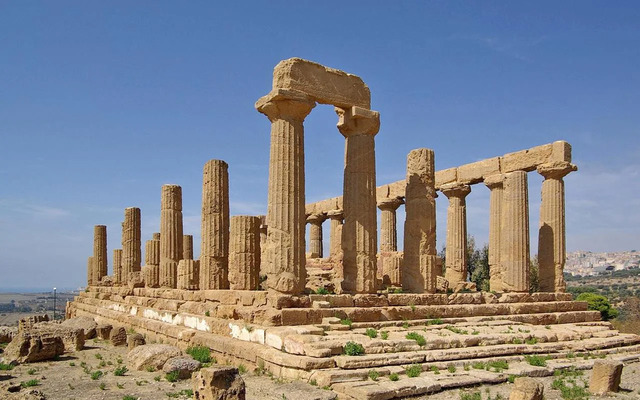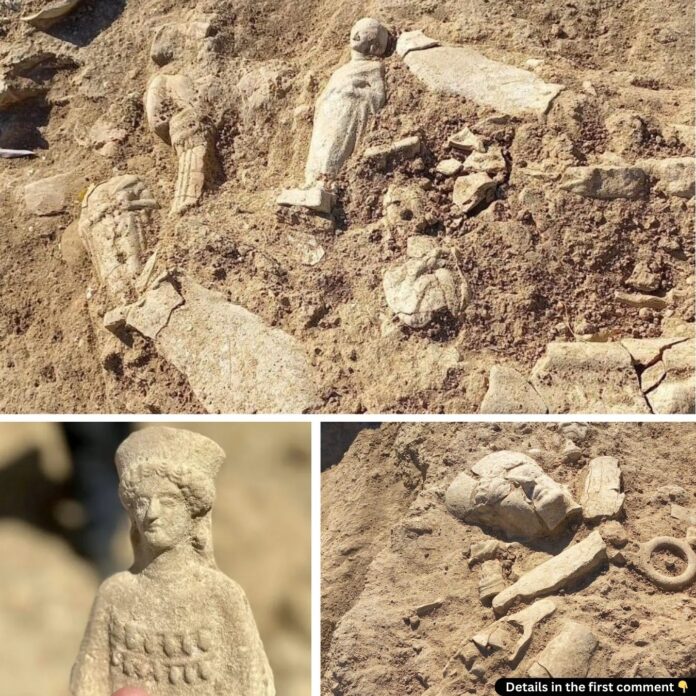In the heart of Sicily lies the Valley of the Temples, a breathtaking testament to Ancient Greek civilization’s grandeur and spirituality. Recent archaeological excavations in this UNESCO World Heritage site have unearthed a remarkable collection of votive figurines, revealing a profound glimpse into the religious practices and resilience of Agrigentum’s ancient inhabitants. These discoveries not only enrich the valley’s historical narrative but also highlight the enduring legacy of faith amidst adversity.
The Historical Importance of the Valley of the Temples
The origins of Agrigentum trace back to around 582–580 BC when Greek settlers from Gela, along with migrants from Crete and Rhodes, established this flourishing city. Situated in the fertile plains of Sicily, the city quickly became a beacon of trade, culture, and religion. The Valley of the Temples, spanning over 3,000 acres, is home to some of the most iconic architectural marvels of Ancient Greece, including the well-preserved Temple of Concordia, the majestic Temple of Juno, and the monumental Temple of Olympian Zeus.


Agrigentum’s prosperity, however, was not without hardship. The city faced destruction during the Carthaginian invasion of 406 BC, a pivotal event that reshaped its history. Despite this devastation, the Valley of the Temples continued to symbolize the resilience and spiritual devotion of its people. Today, the site attracts thousands of visitors annually, offering a timeless connection to its storied past.
Video
Take a journey through ancient Sicily and the Valley of the Temples – watch the video to discover the beauty and history of this UNESCO World Heritage site!
Discovery of the Votive Figurines
Archaeologists recently made a groundbreaking discovery in House VII B, part of a residential complex located north of the Temple of Juno. Over 60 votive offerings, including terracotta statuettes, protomes, and female busts, were uncovered alongside fragments of bronze, oil lamps, and small vases. These artifacts, intricately crafted and well-preserved, offer a window into the spiritual practices of Agrigentum’s ancient inhabitants.
The figurines were found layered above evidence of destruction, suggesting that they were placed as offerings following the Carthaginian attack. This ritual act underscores the community’s attempt to seek divine intervention and commemorate their perseverance in the face of adversity. The discovery of these artifacts not only enriches the narrative of Agrigentum’s history but also provides valuable insights into the cultural and religious dynamics of the time.
Significance of the Artifacts
Ritualistic Meaning
Votive offerings were a cornerstone of Ancient Greek religious practices, symbolizing devotion and reverence for the gods. The terracotta figurines, depicting various forms such as human figures and animals, likely served as prayers for protection, prosperity, or gratitude. Their placement within the ruins of House VII B emphasizes the spiritual resilience of Agrigentum’s people, who sought solace and guidance during tumultuous times.
Historical Insights
The artifacts serve as tangible evidence of the city’s struggle and recovery following the Carthaginian invasion. By analyzing the layers of destruction and the subsequent placement of votive offerings, archaeologists can reconstruct the sequence of events that unfolded during this critical period. These findings illuminate the lived experiences of Agrigentum’s inhabitants, offering a narrative of resilience and renewal in the face of destruction.
Cultural Implications
The craftsmanship of the figurines reflects the artistic and material culture of the time. Intricate details and careful design highlight the skill of local artisans, while the presence of imported materials suggests a network of trade and cultural exchange. The artifacts also provide a glimpse into the social dynamics of Agrigentum, where religious practices played a central role in community life.
The Role of House VII B
House VII B, a significant part of the residential complex near the Temple of Juno, has emerged as a focal point for understanding Agrigentum’s history. Excavations revealed layers of destruction, followed by deposits of ritual objects, indicating the house’s dual role as both a residential space and a site of spiritual activity. The discoveries made here highlight the intersection of daily life and religious practices, offering a more holistic understanding of the city’s cultural fabric.
The Valley of the Temples Today

Since its designation as a UNESCO World Heritage Site in 1997, the Valley of the Temples has continued to captivate visitors with its architectural grandeur and historical significance. Recent excavations, including the discovery of votive offerings, have further enhanced its reputation as a treasure trove of ancient history. With over 23,400 visitors in a single weekend, the site remains a vital link to Sicily’s past, offering both educational and cultural enrichment.
Efforts to preserve and interpret the findings are ongoing, ensuring that future generations can continue to engage with this remarkable site. The discoveries made at the Valley of the Temples not only deepen our understanding of Ancient Greek civilization but also underscore the importance of archaeological research in preserving human heritage.
Broader Implications of the Findings
The votive figurines discovered in the Valley of the Temples offer more than just a glimpse into the past; they provide valuable insights into the interconnectedness of Mediterranean cultures and the shared human experience. By studying these artifacts, researchers can trace the evolution of religious practices, social structures, and artistic traditions. The findings also highlight the importance of resilience and faith, reminding us of the enduring spirit of communities in the face of adversity.
Video
Explore the stunning Valley of the Temples in Agrigento, Sicily – watch the video to uncover the rich history and breathtaking ruins of this ancient Greek archaeological site!
Conclusion
The discovery of votive offerings in Sicily’s Valley of the Temples is a testament to the rich history and cultural legacy of Agrigentum. These artifacts, carefully crafted and ritually placed, reflect the resilience, faith, and artistic brilliance of Ancient Greece. As the Valley of the Temples continues to unveil its secrets, it invites us to connect with a bygone era, celebrating the enduring human spirit that transcends time. Through ongoing research and preservation efforts, this iconic site will remain a beacon of history and inspiration for generations to come.
